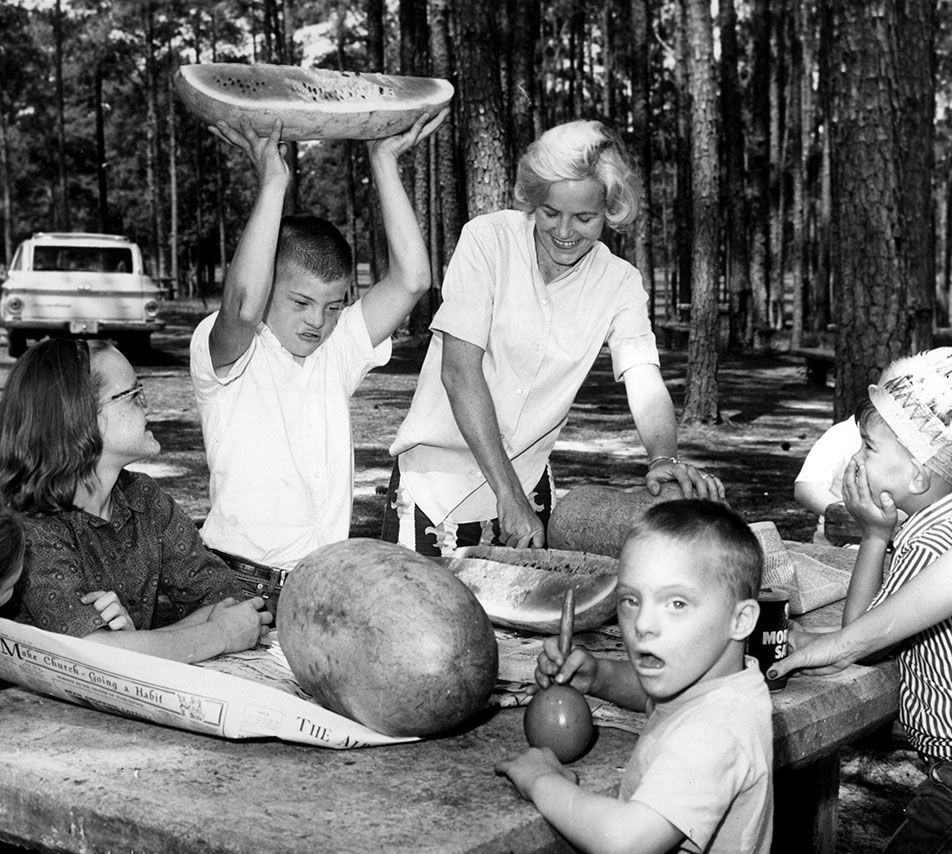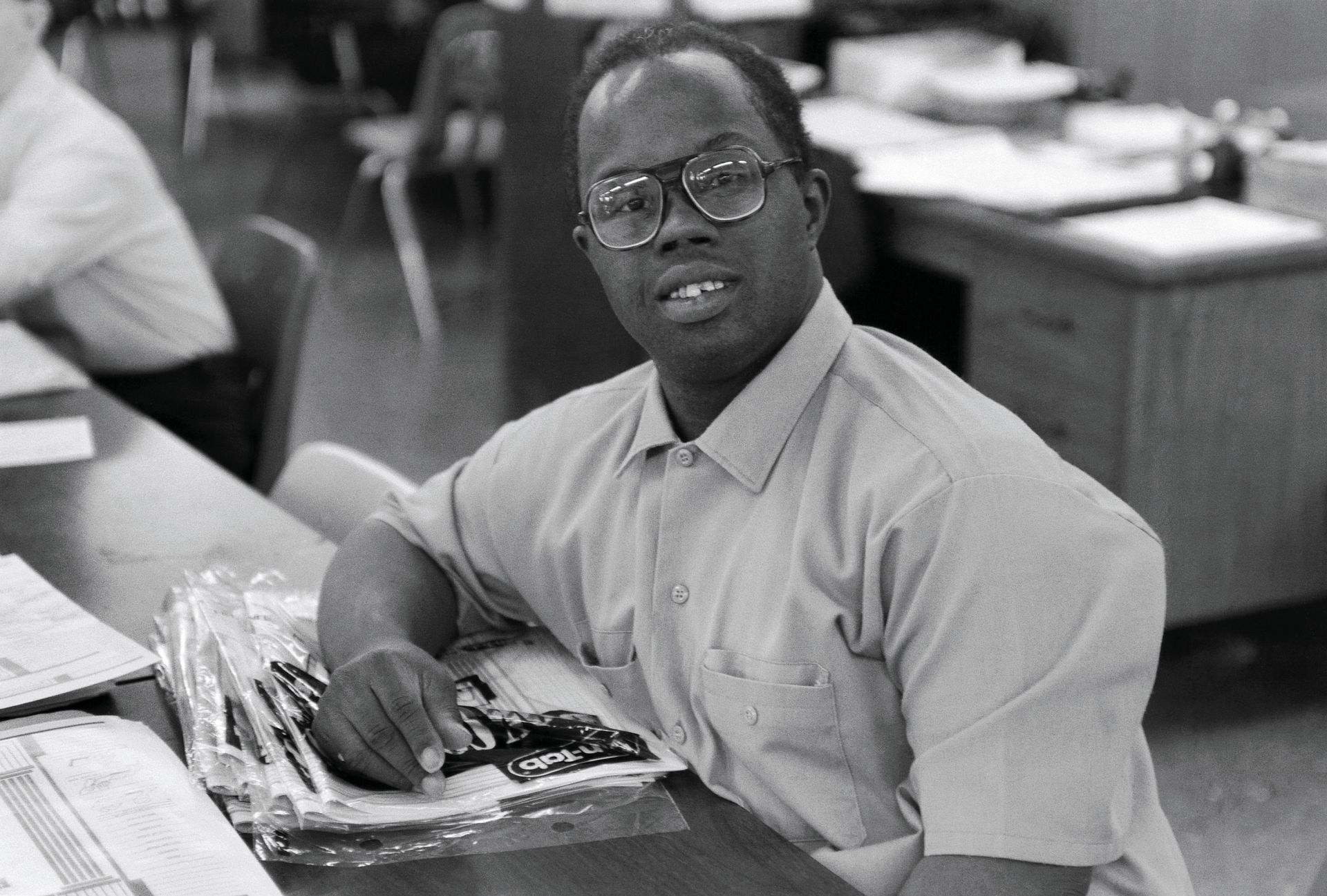The History of Inclusion is Our Shared History
Because Real Change Takes Roots—AND People To Grow It.
Words Matter
A Note About Harmful Language
The Arc of Virginia recognizes the importance of preserving the history of the disability rights movement, even when that history includes outdated and harmful language. While these terms are no longer used today, they reflect the language of the time. We share this history to honor the progress made—and to reaffirm our commitment to inclusive, respectful, and valuing language moving forward.
The Power of Parents
In the 1950s, families were told that institutionalization was the only option for children with developmental disabilities. But a group of determined parents believed in something better. They knew their children deserved lives of dignity, opportunity, and inclusion.
That belief sparked a movement. Nationally, The Arc was founded in 1950 as parents organized across the country. In Virginia, the movement began in 1952 and led to the formation of a state organization in 1955, launching decades of advocacy that continues today.
Name History
Changing with the Times
1952 - 1973
Virginia Association for Retarded Children - VARC
1974 - 1991
Association for Retarded Citizens (ARC)
1992 - Now
The Arc of Virginia

The 1950s: Our Beginnings – A Movement for Change
In 1952, nine individuals from local councils in Richmond, Roanoke, Charlottesville, and Norfolk came together to form a statewide organization advocating for children with developmental disabilities.
In 1955, at an annual meeting with representatives from 19 local councils, the organization was renamed the Virginia Association for Retarded Children (VARC), reflecting the terminology of that era. That same year, VARC was incorporated as a nonprofit organization and quickly emerged as an effective voice in Richmond, advancing legislation to support individuals with developmental disabilities.
In 1957, VARC adopted its first constitution and bylaws. That year, the annual meeting was moved to Richmond in response to
segregation policies that barred African Americans from attending meetings in Alexandria—an early step toward the organization’s commitment to inclusion.
The 1960s: Growth and Advocacy
With a strong focus on membership and chapter development, VARC expanded from 14 local chapters in 1959 to 27 by 1968.
During this decade, VARC continued to advocate for systems change. The organization successfully lobbied for and published a research report that contributed to the passage of the Community Mental Health and Mental Retardation Services Act of 1968—a milestone in building community-based services in Virginia.
Meanwhile, sheltered workshops began expanding across the state, reaching cities like Danville, Northern Virginia, Richmond, Roanoke, and Petersburg. These programs had their roots in 1956, when the Tidewater chapter of VARC partnered with United Cerebral Palsy of Norfolk to launch what became the oldest sheltered workshop in Virginia.
The 1970s: Building Infrastructure
The 1970s marked a pivotal decade in the national disability rights movement, with landmark successes including the passage of the Rehabilitation Act of 1973, the Education for All Handicapped Children Act (1975), and the powerful Section 504 protests of 1977. These developments—alongside the growing Independent Living Movement—began to reshape access to education, employment, and community life for people with disabilities across the country.
During this same period, The Arc of Virginia turned its focus inward. Organizational leaders prioritized strengthening internal operations and expanding fundraising to support the state’s growing network of local chapters. By 1971, there were 35 local ARC chapters across Virginia. As the organization matured, it adapted to the times—changing its name in 1974 to the Association for Retarded Citizens (ARC) to reflect a broader mission that included both children and adults with developmental disabilities.
The 1980s: Self-Advocacy and Systems Change
By the 1980s, the self-advocacy movement was gaining momentum, with people with disabilities organizing locally, nationally, and internationally—proclaiming, “We are People First!” Just as parents had once fought to shift power from professionals, individuals with disabilities were now demanding their own voices be heard.
At the same time, Virginia ARC was active in shaping public policy. The organization published a report on the impact of the state’s training centers and filed a lawsuit against Southside Training Center, challenging its failure to provide a least restrictive setting for residents.
In 1988, The Arc launched its “Make Waves Virginia” campaign, successfully advocating for increased funding for the state agency responsible for providing community-based services.
As individuals and families demanded more than words—they demanded action—the next decade would mark a turning point in the fight for real investment in community services.
The 1990s: A Turning Point in Community Advocacy
This period marked the beginning of what would become The Arc of Virginia’s signature advocacy effort: addressing the state’s long-standing waiting lists for community-based services.
In 1998, a legislatively mandated study (HJR 240), conducted in collaboration with The Arc, found that Virginia needed a major infusion of funding to serve the more than 5,000 individuals waiting for community-based supports. Despite these findings, the Governor proposed no funding, sparking a grassroots advocacy campaign led by The Arc that called for $26 million in new investment. The General Assembly ultimately approved $2.75 million—a small but important first step.
Motivated by the state’s inadequate response, The Arc launched its now-iconic campaign:
"A Key of Our Own—Unlock the Waiting Lists." This effort captured public and legislative attention. The Governor proposed $16 million in his next budget, and the General Assembly increased the total investment to more than
$35 million in combined state and federal funds to reduce the waiting lists.
The 1990's: Family Advocacy and Strategic Partnerships
During the 1990s, The Arc of Virginia secured grant funding for key initiatives that strengthened family engagement and advocacy. One major milestone was the launch of the Family Involvement Project, which ensured family representation in Virginia’s early intervention policy work. This program continues today as the New Path Family Support Network.
In 1996, The Arc partnered with families to secure funding from the General Assembly for a statewide Autism Training and Family Support Program, known as The Autism Project of Virginia (TAP-VA). Initially housed within The Arc, TAP-VA grew in scope and capacity, becoming an independent organization by 1999. Today, it is known as Commonwealth Autism.
During this time, The Arc also served as the fiscal agent for the federally funded Virginia
ADA Coalition for Education, helping to advance understanding and implementation of the Americans with Disabilities Act (ADA) across the Commonwealth.
A New Era of Advocacy (2000–2010)
As Virginia faced deep budget cuts in the early 2000s, The Arc of Virginia’s strong advocacy helped protect services for people with developmental disabilities—securing far smaller reductions than other state agencies.
In 2003, over 700 advocates marched in Richmond to demand disability rights and protest further cuts—a powerful show of unity and grassroots strength.
By 2006, A Life Like Yours emerged as the defining message of our movement. Coined by The Arc of Northern Virginia and embraced statewide, it became central to educating lawmakers about the importance of inclusion and community living.
In 2007, The Arc launched the Community Living Action Plan, a bold strategy to shift resources from institutions to community-based services. That same year the Board formed an autism advisory group to ensure that policies reflected the full spectrum of developmental disabilities.
These efforts laid the foundation for major systems change—expanding community housing, addressing waitlists, and reshaping policy across the decade.
➡️
Read more about specific public policy milestones of this period on our Public Policy page.
The 2010s: From Institutions to Inclusion
In 2009, The Arc of Virginia took a bold stand—filing a lawsuit to stop the rebuilding of a large institution and calling for investment in community-based services instead. That urgency grew in 2012, when the U.S. Department of Justice reached a landmark Settlement Agreement with Virginia, requiring the closure of four institutions and major reinvestment in community supports.
Self-advocates stepped up. In 2013, a group visited Virginia’s Training Centers, including Kate Olson, who knelt beside a cemetery marker honoring those buried without names. Her quiet moment became a powerful symbol of why this work matters.
In 2016, Virginia overhauled its waiver system—unifying services for people with all types of developmental disabilities. This major reform, grounded in The Arc’s earlier Community Living Action Plan, expanded access regardless of diagnosis and made equity a cornerstone of the DD system.
During that same decade, The Arc of Virginia made a difficult but deliberate shift—from focusing primarily on intellectual disability (ID) to
fully embracing the broader DD community. It was a decision shaped by deep reflection and differing passions, but it marked a lasting commitment to inclusive advocacy that continues today.
The 2020s: Progress Through Challenge
The decade began with the COVID-19 pandemic, which strained support systems and exposed long-standing inequities. Through it all, The Arc of Virginia remained focused on protecting community services and amplifying the voices of people with developmental disabilities.
This era brought significant progress—particularly in criminal justice reform and the historic 2024 investment to end the Priority One waitlist, a goal more than 25 years in the making. The Arc continues to push for a proactive system that meets the needs of all Virginians with developmental disabilities.
We’ve also expanded statewide leadership in
self-advocacy,
peer mentoring,
shared living, and
technology access—strengthening community-based services that people want and choose.
Looking Ahead: A Shared Future of Belonging
For more than 70 years, The Arc of Virginia has stood at the forefront of the disability rights movement—challenging institutions, shaping policy, and building community. Our journey has never been just about programs or services. It has always been about people: families, self-advocates, leaders with lived experience, and allies who believe in a world where everyone belongs.
As we look ahead, we carry forward the lessons of our past—and the determination to ensure that every voice is heard, every right is protected, and every person has the chance to live A Life Like Yours.
No matter where you come from or how you're connected to this work, there's a place for you in this movement. Everyone is welcome—and needed—as we keep building a more inclusive Virginia, together.



